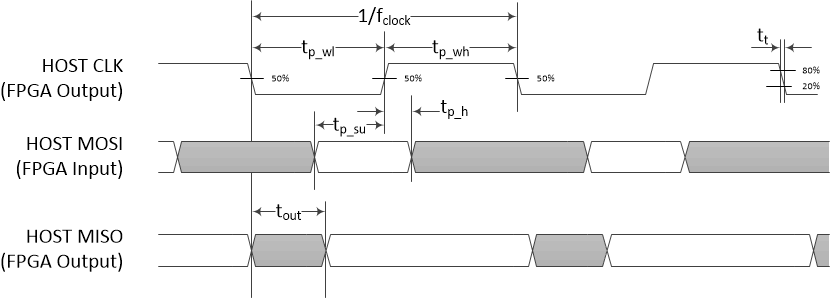DLPU100B May 2020 – June 2024 DLP2021-Q1 , DLP3021-Q1
- 1
- Abstract
- Trademarks
- 1Introduction
- 2FPGA Pin Configuration and Functions
- 3Specifications
- 4Feature Descriptions
- 5Layout
- 6Host Command Protocol
- 7FPGA Register Definitions
- 8Revision History
3.3 Host SPI Interface Timing
Table 3-3 Host SPI Interface
Timing
| Description | MIN | MAX | UNIT | |
|---|---|---|---|---|
| fclock | Clock frequency, HOST CLK (50% reference points) |
5 | MHz | |
| tsu | Setup time – HOST MOSI valid before HOST CLK capture edge (50% reference points) |
0 | ns | |
| th | Hold time – HOST MOSI valid before HOST CLK capture edge (50% reference points) |
20 | ns | |
| tout | Clock to data out – HOST MISO from HOST CLK transition edge (50% reference points) |
40 | 60 | ns |
 Figure 3-1 Host SPI Interface Timing
Diagram
Figure 3-1 Host SPI Interface Timing
Diagram